#8th century AD
Text
India’s Vedic Sanskrit Upanishads: Foundation of Religions and Karma! | Ancient Origins
https://www.ancient-origins.net/news-history-archaeology/upanishads-0016125
View On WordPress
#1st millennium BC#8th century AD#Aitareya#Ajivikas#Aranyaka#Aranyakas#Aruni#Atharva Veda#Atman#Bâlâki#Brahman#Brahmana#Brhadāranyaka#Buddhism#Buddhist#Chāndogya#Hanuman#Hinduism#India#Indian Subcontinent#Isa#Islam#Jainism#Kaivalya#Karma#Katha#Kauṣītakī#Kena#Maitrī#Monkey God
0 notes
Photo
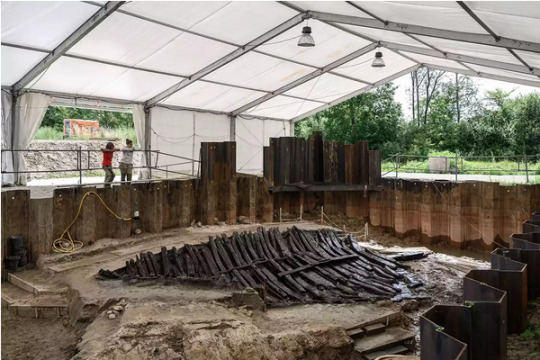
Last year, French archaeologists in Villenave-d'Ornon on the banks of the Garonne in southwest France opened an old excavation site from 2013 and brought back to light a fragment of a wreck about 12 metres long.

This was built of oak, chestnut and pine and is dated to A.D. 680 and A.D. 720 based on radiocarbon dating. The final fate of the ship is uncertain: the wood could be injected with resin to preserve it, or it could be reburied at the site where it was found.
91 notes
·
View notes
Text
One Bad Gloop if it was translated like the Emerald Tablet:
Original text, now lost to history:
1) “One bad gloop, and she do what I yoinky
2) Two big splurgs and a big ass gloopy
3) Three more yoinks, then I buy me a smoothie
4) Poured up a gloop, that's a gloop and a splurgy”
From the Jabirian Corpus, of legendary islamic alchemist Jabir Ibn-Hayyan, 8th-9th century:
1) A single bad gloop! What I yoinky, done!
2) They number among this: Two teaming splurgs, and a donkey-drawn cart of gloopy
3) The yoinks number three, at which point, one must acquire for themselves a smoothie
4) Poured up a gloop, that is a gloop and a splurgy”
Notes: Earliest extant translation is notably corrupt.
Secondary Arabic translation by an unknown author. 9th century:
1) One gloop of malicious character, and what I yoinky is done of her
2) Attested are two great splurgs and a gloopy of great magnitude
3) Of yoinks, three! A smoothie follows shortly after.
4) Upon the pouring of a gloop comes another gloop, and a splurgy.
Notes: This version is as corrupt as the Jabirian corpus edition.
From the Book of the Composition of Alchemy, 12th century Latin:
1) One bad gloop, a yoinky be done
2) Two great splurgs, a gloopy of a strong mule
3) Three yoinks, a smoothie
4) A poured gloop, a gloop, a splurgy
Notes: This was the earliest translation into Latin. However, it was not widely circulated.
From Roger Bacon’s Secretum Secretorum, 1445:
1) One badde gloope, and what I yoinkie hath been done of her
2) Two greate splurgges, and the gloopie of a strong asse is produced
3) Add upon this three yoinks, and the purchase of a smoothie
4) From this is distilled a gloope, another gloope, and a splurgie
Notes: This translation was the most widely read in Europe for the time. This form was the basis for several centuries of translations.
From Giorgio Beato’s Aurelium Occultae, 1613:
1) Only a single gloop is required for them to yoinky
2) Whatever splurgs are needed, they are half that a mule's gloopy
3) Where yoinks number three, this will result in a smoothie
4) Also, a gloop, when added to the mixture, will be doubled, along with a splurgy
From Roscrucian mage William Kriegsmann, allegedly from Phonecian 1633:
1) I speak of a gloop, and all I yoinky shall be done
2) I speak of two great splurgs, and their gloopy most tenacious
3) I speak of three more yoinks, and smoothies
4) I speak of a gloop upon the chalice, for it is but a gloop and no more.
Notes: There was no phonecian. Kriegsmann was likely working from the Secretum Secretorum Latin.
From Sir Issac Newton, 1680:
1) Tis a single impure gloop, and from this a yoinky is born
2) Fore is added a grande gloopy, comes a pair of splurgges
3) Purchase of wane smoothie tis built, upon the three pillars of yoink
4) Ye gloop poured, tis but a gloop and a splurgy
Notes: Newton was an accomplished polyglot, his translation is based in one of the Arabic originals, though which is unclear.
From Rosicrucian mage Sigmund Bacstrom, allegedly from Chaldean, 1802
1) Tis from CHIRAM ONE of the GLOOPY
2) Of two SPLURGS and a great GLOOPY
3) Of three YOINKS and a SMOOTHIE
4) Upon the chalice, a GLOOP and a SPLURGY
Notes: Though many translations claim to be from a Chaldean original, this is unlikely to be true. The Bacstrom translation is notably corrupt.
From Madame Helena Blavatsky, unknown date, mid 19th century.
2) Two splurgs and a gloopy conjoin to form The One
3) All things are produced by conjunction of Splurgs and Gloopy
4) Poured up a gloop, a gloop and a splurgy are Complete.
Notes: It is not known why Blavatsky omitted the first line.
From Fulcanelli, translated from the Sieveking french, 18th century.
1) One malicious gloop, and what is yoinky shall be done by her.
2) By divine conjunction, two big splurgs produce gloopy most grand
3) Upon three additional yoinks, the ONE sires the smoothie
4) Here, a gloop and and a splurgy are poured upon the chalice
From Fulcanelli, revised translation, early 19th century
1) One bad gloop, and what is yoinky be done
2) Two big splurgs, to this, a big ass gloopy
3) Upon three yoinks a smoothie is sired
4) Upon pouring of the gloop, a splurgy and a gloop are produced
I had fun writing this. If you want my actual alchemy research you can find it here.
3K notes
·
View notes
Text
Tieflings DnD
- variations for the fanfic writers and artists!! -
There’s a lot about tieflings on the internet. THESE ARE CANON, except for one thought i put in.
If you’re gonna do BG3 fanfics about Tieflings, please please please consider adding some spice with origin lore and CANON facts about their race :) it would be SO fun!
Pls I need more zevlor fanfic too.
PLS READ: I don’t believe in censorship or ignoring the subject of people who are oppressed, but be mindful of how you write and use oppression of dnd races on your tav pls.
-
Orange; Canon Historical Events, Abilities, Bodily Facts, and Bloodlines. It means i think you should look into it.
Pink: I think it's cute.
Red; Warning, Comment
Purple; Headcanon (only one of them)
;;;;;;;;;;;;;;;;;;;;;;;;;;;;;;;;;;;;;;;;;;;;;;; <3 ;;;;;;;;;;;;;;;;;;;;;;;;;;;;;;;;;;;;;;;;;;;;;;;;;;;;
- Tieflings are prone to bad luck, because of the Curse of Aasimar.
- Planar Proverb “don’t ever make a bet with a Tiefling” hey I already made one with Lakrissa.
- They’re arcanally gifted, most of them. Zariel Tieflings are much better melee fighters.
.*.*.*.*.*.*.*.*.*.*.*.*.*.*.*.*.*.*.*.*.*.*.*.*.*.*.*.*.*.*.*.*.*.*.*.*.*.*.*.*.*.*.*.*.*.
- Tielfling Blood; is tainted from the hells so they could have human parents. Be descendants of demon, devils, evil deities, night hags, and succubus!
- i know y’all love aphrodisiac fanfics, succubus spittle is exactly what you need dawg. Someone make me a fanfic including succubus heritage.
- along with that, Tieflings are unable to breed with anyone except humans or other Tieflings. Literally. They can be Tiefling or human.
- Usually there is some tell to if they’re Zariel, Asmodeus, Mephistopheles by birth mark, or traits like cat eyes, or night hags bloodlines have red eyes without pupils or scelaras
EDIT: I thought the flaming pupils were cat-like slit eyes in the game, but Karlach does indeed have regular slits!
- Tieflings can be male, female, or without gender. It is a canon fact. A win for my gender struggling homies.
- They can have green, blue, purple, pink, yellow, red skin tones. With dark hair colors only like black, purple, dark red and blue. I don’t care for this, genes be gene-ing so have any color you want.
Mephestopheles is recorded as to having blue skin, pale blue whites and red eyes, soot black scales, with large wings in the 2nd Manual. BUT in a 3e version he is described having red skin, bat wings, being 9ft, with white eyes, and slick black hair. Both of these are present in Mephestophic Bloodlines in BG3. Raphael is the son, though cambion, is red.
Asmodeus rules the Nine Hells. Mephestopheles being his archduke, only rules the 8th layer. Asmodeus has a humanoid, and a scale-fiend version of himself. He's red, slim, 13ft tall, horned, vibrant red eyes, and a neatly trimmed beard. He is Lawful-Evil.
.*.*.*.*.*.*.*.*.*.*.*.*.*.*.*.*.*.*.*.*.*.*.*.*.*.*.*.*.*.*.*.*.*.*.*.*.*.*.*.*.*.*.*.*.*.
The Blood War (where Karlach escaped) is described as a "philosophical war" and which kind of evil would rule. Asmodeus plays a part but didn't start it, it's rooted in ancient Hell conflicts. Asmodeus claimed it was a senselessly bloody conflict from a militia standpoint. He really hates it, he's not a fan of it. INFERNAL POLITICS ARE FUCKING COMPLICATED. look into it :)
Zevlor was a Hellrider or Rider of Elturel! a Cavalry unit for Elturel during the 14th and 15th century. They ride horseback, and use spears and bows. They're well reguarded!! Zevlor should have more pride in himself for his service, being a refugee isn't his fault, or The Descent.
In the late 1400's striving for Paladin Knighthood in the Order of Companion was a rank of Hell rider. Before and after the year 1494, you could be a Paladin and join freely.
The Order of Companions was an Elturel, of Western Heartland, theocratic realm of Paladin Knighthood. It's just a region of Paladins that are highly reguarded. They typically worship Tyr, Torm, Helm, and Aumanator.
They kept order in the high capital of Elturel, preserving local civilization from outer destruction. They're super Lawful Good.
Typically an Oath of Devotion or an Oath of the Crown.
"For a City Guard, they outmatched the armies of the Whole Realm" - Forgotten Wiki Realms
They guard general land, they aren't really police, and can escort as far as Waterdeep if privileged to. It is a job they hold for life. I FUYCKING LOVE HELLRIDERS.
Shortly after Elturel’s descent into Avernus, the Tieflings were blamed for the fall, and expelled from the city entirely. Zevlor and any tiefling hellrider’s title has been stripped from them. Any hellrider’s were arrested at The Gate. And the reputation of tieflings sunk even lower.
Badlurian’s are Elturian’s rivals but Duke Ravenguard was tricked into coming to Elturel for politics and ended up helping and sending in troops to help fight. He’s extra important! I might find Wyll, all though lovely, useless, his father is very brave and noble and amazing for what he does.
.*.*.*.*.*.*.*.*.*.*.*.*.*.*.*.*.*.*.*.*.*.*.*.*.*.*.*.*.*.*.*.*.*.*.*.*.*.*.*.*.*.*.*.*.*.
- Tieflings can have feathers! Although rare. They can have fur, scales, or be bald like humans. They can be any variation of sorts!
- A more common portrayal of tieflings, is having solid colored eyes, whites and irises the same color. They can be black, red, silver, gold, or white.
- Tieflings are technically minorities and don’t live in the highest neighborhoods. It gives them an even worse reputation.
- Most of the Tieflings with famous status, also give bad reps. Climbing their way to the top in corruption.
- When Tieflings get nervous, experience anxiety, or are upset. They’re known to wrap their tails around their leg!! Super telling.
- They can use their tail like a monkey, very dexterous about it. It’s about 5-6ft long.
- Their ages, weight, height. All similar to humans. Idk how logical that is with 5 extra feet of meat behind them. Sometimes they can live longer, to about 120-150 years old.
- Tieflings can look just like humans. Though they can have their hellish features, those with strong hellish features are often killed at birth out of disgust.
- They can also have legs of a goat, tail akin to a horse or a lizard.
- Tieflings can be really good at thieving, hiding, and deceit.
- their diet consists of meat, marrow, gristle, fat, and bones. They’re highly carnivorous. They even eat roasted insects.
- Many worship Besheba, the goddess of bad luck, finding similarities in them and their goddess.
.*.*.*.*.*.*.*.*.*.*.*.*.*.*.*.*.*.*.*.*.*.*.*.*.*.*.*.*.*.*.*.*.*.*.*.*.*.*.*.*.*.*.*.*.*.
- Tieflings are as sensitive as humans, same hearing. They usually have dark vision. And their body temperatures can be colder or warmer than humans depending on their type of tainted blood. --Mephistopheles blood lines are from the frozen layer of hell, maybe their blood is colder.
- They don’t purr, sorry girlies. They’re closer to humans than Tabaxis or Driders.
- Tieflings don’t regrow horns unless they’re still young, though they do tend to file them down.
- They have a natural unsettling aura about them. Even if their heritage is unknown to others, it makes people uncomfortable. They also can smell of sulphur.
.*.*.*.*.*.*.*.*.*.*.*.*.*.*.*.*.*.*.*.*.*.*.*.*.*.*.*.*.*.*.*.*.*.*.*.*.*.*.*.*.*.*.*.*.*.
- There are so many Tieflings bloodlines. I love the Babau Tieflings bc they’re already known as uncanny creatures-- Babau Tieflings are gaunt and skinny, darker skin, and a small horn coming from the back of their head.
- Marilith Tieflings are known to be seductive- more than they already are, and have dark hair. They have snake-like half-bodies and have grey tongues.
- Succubus Tieflings! They’re like the ones you see in bg3, often have a small set of wings.
- Tieflings can have so many fucking variations it makes me dizzy.
- Tieflings can have bat-like wing shaped ears, that perk up and shit. I know yall think about ear movements. <zevlor has this>
.*.*.*.*.*.*.*.*.*.*.*.*.*.*.*.*.*.*.*.*.*.*.*.*.*.*.*.*.*.*.*.*.*.*.*.*.*.*.*.*.*.*.*.*.*.
Edit: Ya'll loved this :) I can do another on Tiefling politics if ya'll want. Or more bloodlines and fun facts if you want.
I have built another list of Canon facts about Driders and Kar'niss Headcanons if you monster fuckers are interested!!
Currently in the works; He Who Was Headcanons and Shadar'Kai canon facts and events.
288 notes
·
View notes
Text
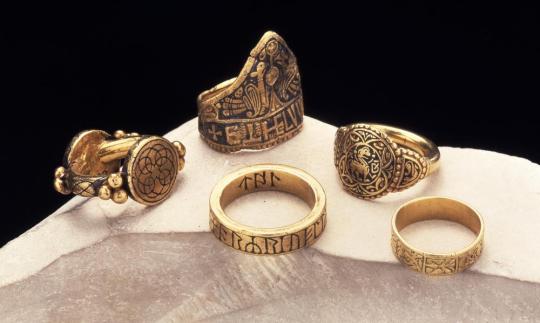
Gold rings from Anglo-Saxon England, 8th-10th century AD
from The British Museum
9K notes
·
View notes
Text

St. Conall Cael's Bell Shrine, Ireland, 7-8th century AD with additions and restorations made in the 11-12, and 15th centuries.
672 notes
·
View notes
Text
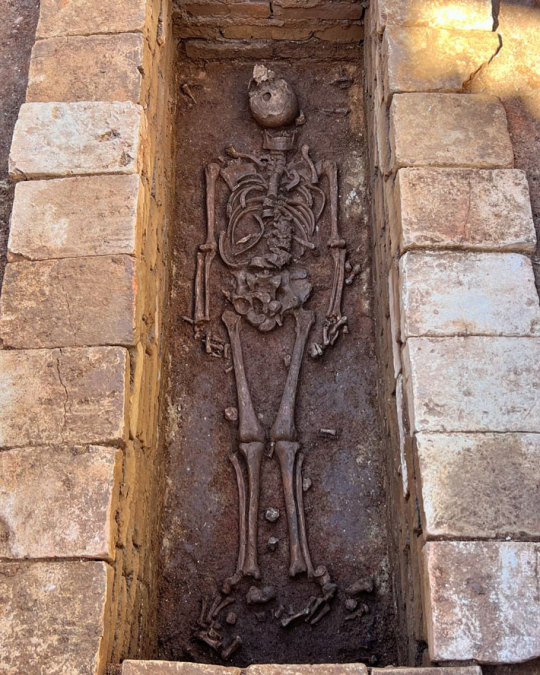
Three Roman Graves Uncovered in Portugal
Three burials dating to the 5th or 6th century AD have been unearthed in the ancient Roman city of Ossónoba in Faro, southern Portugal.
The Ossónoba’s first archaeological evidence dates back to the 4th century B.C., when the Phoenicians settled in the Western Mediterranean. The city was then called Ossónoba From the 2nd century B.C. until the 8th A.D. the city was under Roman and Visigoth dominance being afterwards conquered by the Muslims in 713.
A team of archaeologists from ERA Arqueologia discovered ancient Roman structures and the remains of a man, woman, and child while conducting excavations over a 5,000 square meter area that will eventually house a real estate development.
The excavations, which took place before a construction project, revealed the grave of a man whose skeleton was complete and who would have been between 39 and 45 years old, as well as a young woman under the age of 25, and a baby who would have been no more than six months old, according to archaeologist Francisco Correa.
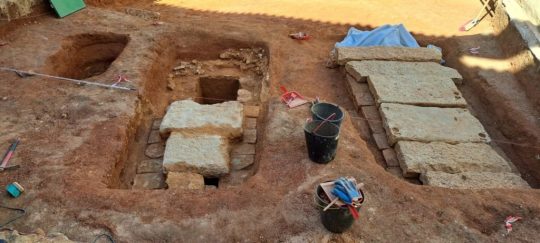
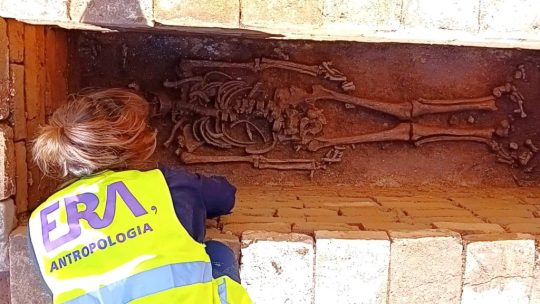

Francisco Correia, the project’s head archaeologist, said in a statement that the discoveries were made in an old truck repair workshop and are believed to date from the 5th or 6th century.
The tombs appear to have been looted in the past to steal “small bracelets, necklaces, and rings,” according to anthropologist Cláudia Maio. The tombs indicate that the people may have had “some economic status” as they were not simply placed in open graves but instead buried in carefully built graves.
The proximity of the three people’s graves seems to indicate that they were family members, though the team cannot be certain of that. “But we cannot say anything for sure,” the anthropologist said.
To learn more, the researchers hope to be able to provide more precise answers through DNA tests and isotopic analysis techniques used to determine population movements and dietary habits from chemical traces in ancient human remains.
This latest archaeological discovery did not come as a surprise to archaeologists, who had already led similar works which resulted in the discovery of a Roman game artifact believed to date back to the first century AD in 2020.

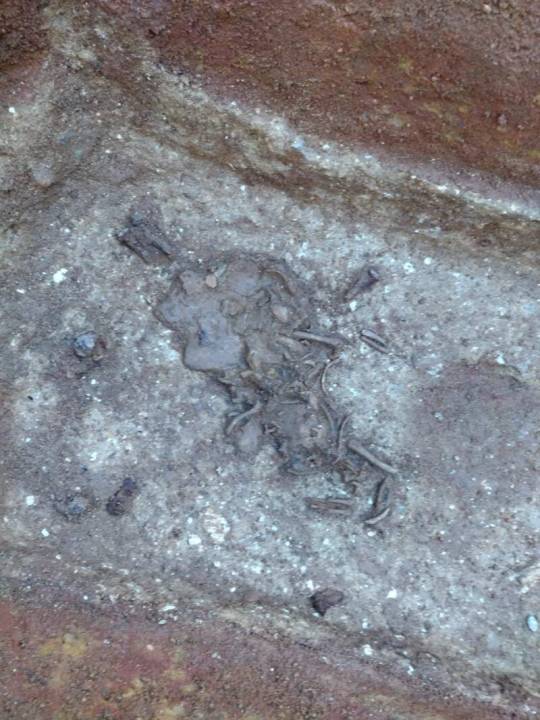

“We know that we are in an area with archaeological potential where there is a 17th-century convent (of Santo António dos Capuchos) to the west, and to the east lies the area where the mosaic of the Ocean God (Deus Oceano), now a national treasure, was found,” he said.
What did come as a surprise to archaeologists was the location of the tombs.
“Based on previous studies, this would have been an area that was possibly residential or more linked to industrial activities. There are many traces of salterns. Largo da Madalena would have been the entrance to the urban area of the city of Ossónoba. The identified graves are in the Figuras area, near Teatro Lethes, close to the Ermida de São Sebastião and the Pavilion of Escola D. Afonso III. This area is almost within the urban fabric,” the archaeologist explained, adding that this illustrates both the “growth and decline of Ossónoba.”
The graves of the man and the woman “were sealed with limestone slabs,” believed to be reused parts from “some of the most emblematic buildings that would have been here in the area,” he believes.
According to the project manager of ERA Arqueologia, who was co-responsible for the work, in addition to the graves, hundreds of small pieces were also discovered which suggest that there may also have been a mosaic there.
The researchers also recovered Roman artifacts in the area, including ceramics, bone dice, nails, pins, a spoon, possible evidence of a dye factory, and coins minted during the reign of Constantine the Great, between A.D. 306 and 337.
Cover Photo: Roman mosaic of the god Oceanus, part of the ancient city of Ossónoba, the modern town of Faro, in Portugal.
By Leman Altuntaş.
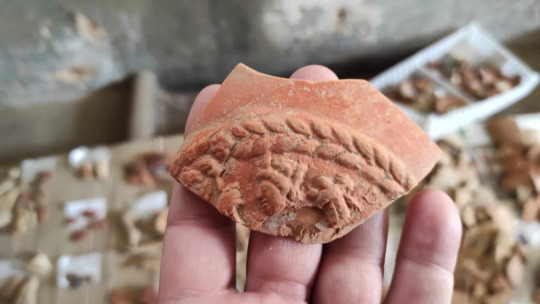

#Three Roman Graves Uncovered in Portugal#Roman city of Ossónoba in Faro#ancient grave#ancient tomb#ancient artifacts#archeology#archeolgst#history#history news#ancient history#ancient culture#ancient civilizations#roman history#roman empire#roman art
241 notes
·
View notes
Note
hey! i wanted to ask if you know how medjays would fight in ancient egypt? or alternatively a warrior type person during that time? thank you!
So, this one of those, “short answer/long answer,” situations. The short is that the Medjays were archers.
The long answer is that it's a lot more complicated than that, in part because the term Medjay referred to entirely different concepts over the course of ancient history. Also, simply saying, “in ancient Egypt,” covers roughly three thousand years, and things did change a bit over that time. Fortunately, the Medjay only existed for over a thousand years. Which, doesn't actually help narrow it down that much.
The original meaning of the term referred to Nubian nomads. It's not completely clear (at least, to me) whether this actually referred to a specific tribe or community of nomads, or if the term was applied indiscriminately. The Nubian focus on archery is something that persisted into the 8th century AD.
The term, Medjay later came to refer to an order of guardian/protectors in Dynastic Egypt. It's a little unclear how much continuity existed between these two groups. During the Second Intermediate Period of Egypt, Medjay mercenaries were hired by princes in Thebes to help recover Egyptian territory that was being held by the Hyksos. After the Hyksos were expelled and the New Kingdom was formed, the Medjay were repurposed into a kind of proto-police force, tasked with keeping the peace.
Sometime after 1570BCE, they effectively became, Egypt's police. This meant that they investigating crimes, interrogating suspects, and prosecuting criminals in Egypt's judicial system. (Judges were appointed separately, and the concept of a defense attorney didn't seem to exist. But, witnesses could testify on behalf of the accused. The system was: Guilty until proven absolutely innocent.) You can probably dig into this more if you really want. These police kept the name Medjay, even after the organization incorporated non-Nubian members. (Worth noting, this was mostly for secular laws and crimes. There was a separate branch of the Medjay who were tasked with protecting holy sites, and enforcing religious laws.)
Interestingly, there's surviving tomb art that depicts Medjay using monkeys and dogs (not both, at the same time) to assist in detaining fleeing suspects.
It's likely that the Medjay mercenaries were using shields and spears (there's some surviving grave goods that depict contemporary military forces), and this was a pretty common form of infantry throughout most of human history. Later on, Egyptian fighters would have been using the kopesh. This is a distinctive, curved, bronze sword. They dated back to the third millennia, and while their origin isn't Egyptian, they became quite popular in Egypt roughly at the same time that the Medjay were transitioning over to becoming the New Kingdom's police force. It's also likely that the original mercenaries were experienced archers, and may have continued serving in that role during the formation of the New Kingdom.
The historical Medjay are a pretty fascinating group, when you actually go and look at the history, and as a result, their depiction in pop-culture becomes somewhat disappointing as a result. These really weren't ancient warriors, so much as cops in antiquity, which is pretty wild when you sit down and really look at them.
It's worth that before the Hyksos occupation of Egypt, the Egyptian military was technologically antiquated. The Hyksos introduced the compound bow, and chariot to Egypt (among other technological innovations.) This meant that warfare in Egypt before the Hyksos invasion, and after were dramatically different.
-Starke
This blog is supported through Patreon. Patrons get access to new posts three days early, and direct access to us through Discord. If you’re already a Patron, thank you. If you’d like to support us, please consider becoming a Patron.
156 notes
·
View notes
Text

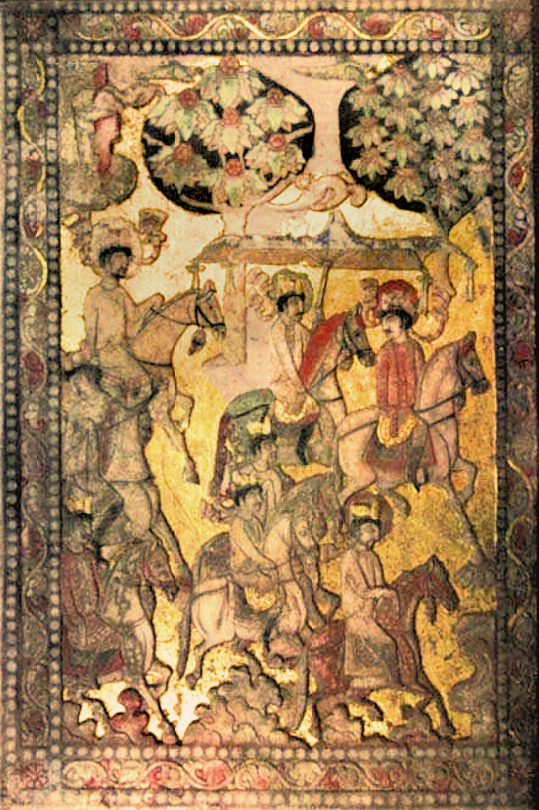
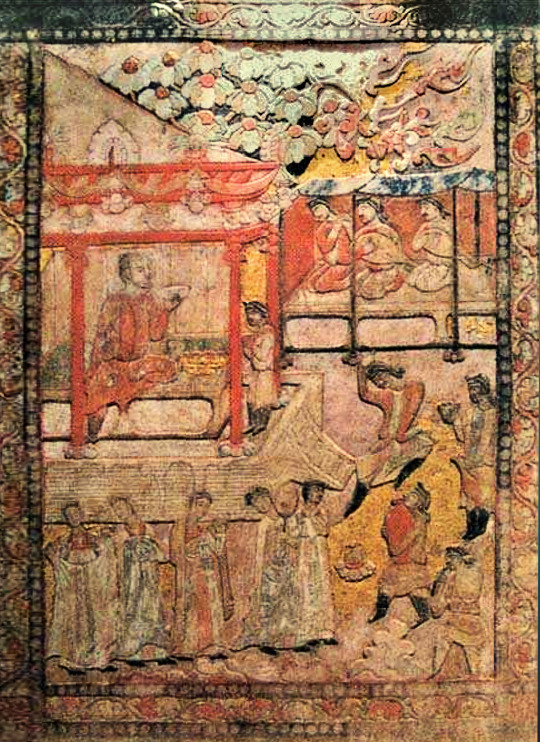


Tomb of An Bei 589 CE. Sogdian tomb.
I couldn't find the translation for the epitaph for this one.
"Differently from the other tombs quoted in this paper, Anbei’s tomb was not excavated by archaeologists, but found and looted by the robbers, therefore the archaeological context of this tomb, even the date of this accidental finding are lost. Until now, all we know is that this tomb robbery happened someday between 2006 and 2007. Several stone figurines, a funerary couch and Anbei’s epitaph stone were found in the tomb. Two stone figurines, parts of the base of the couch and the epitaph are now exhibited in the Tang West Market Museum in Xi’an (Fig.20), four panels belonging to the private owners, including two processing and two banqueting scenes, were published, too (Fig.21).
Although owning the typical Sogdian name An, which means his ancestors migrated into China from Bukhara, his homeland was described in a completely different name, the state of Anjuyeni, which was never recorded by any source before. An’s family moved to China during the Northern Wei dynasty, some of his family members once served in the Bureau of Tributaries. For the court, it’s also an usual way to adopt expatriate immigrants to work in the diplomatic system. Anbei’s father, An Zhishi, served as a middle-rank commanding officer among the honour guards of the court.
As a, likely, third generation immigrant, Anbei’s life depicted in the epitaph was very brief, too. Except for the usual eulogies commonly written in every epitaph, two main parts of his experience were emphasized: his mercantile ability and simple bureaucratic career. The one who wrote the text made a metaphor, assimilating Anbei with two famous ancient Chinese merchants, Baigui and Xiangao during the Eastern Zhou Period (approximately between 8th c. - 3rd c. BC); After that, Anbei’s only short official career as a very lower status clerk of the military headquarters of vassal leader Xuchang was recorded, probably happened in 575 AD when he was 20 years old. Soonafter the Northern Qi was replaced by Northern Zhou dynasty in 577 AD, Anbei returned home in Luoyang, the place where he died and was buried in 589 AD at the age of 34.
The motivation for me to list this robbed tomb here, together with the other tombs which have detailed background obtained through scientific archaeological excavation is, however, mainly not for its elaborate funerary couch, but because of his distinctive identity depicted in the epitaph. Prior to the discovery of Anbei’s tomb, the deceased of all five tombs which constituted the most important foundation of the studies of the foreign immigrants in early medieval China, namely the tombs of Lidan, Kangye, Anjia, Shijun and Yuhong, owned high-ranked official positions such as head of a prefecture or Sabao, which may result in a misconception that only aristocrats of the foreign immigrants could be buried with such elaborate funerary furniture. However, Anbei’s tomb provided an additional possibility about the status of the tomb occupant who used the stone funerary furniture. What is expressly shown in the epitaph, during his 34-year-long life, Anbei was just a very ordinary person, without any notable ancestry from homeland, neither held any high-ranked post, nor received anyone as a posthumous reward.
Except for the basic information above, there is also a remarkable narration during the introduction in the beginning of Anbei’s epitaph, which may reflect the collective mindset among most of the foreign immigrants in China and their efforts in social integration, ‘Although he is a foreigner, after a long life in China, there is no difference between him and the Chinese’.
-Yusheng Li, Study of tombs of Hu people in late 6th century northern China
204 notes
·
View notes
Text

We're so used to referring to Apollo and Artemis as Divine Twins, but did you know that the earliest known Ancient Greek sources do not explicitly denote the two as being twins?
That isn't to say one text depicting a myth is more correct than the other - but I so rarely see mentions of Apollo and Artemis as not twins that I find it all the more dear.
There is beauty in Solar and Lunar twins - but I also see the same beauty in siblings who are not predetermined to be each other's mirror by the fact of birth.
The first mention of Apollo's name in the Ancient Greek texts is in the Homeric Hymn to Apollo (3), trans. by Hugh G. Evelyn-White:

Here's a link to the original.
They are not explicitly called twins and They have different birthplaces: Apollo's birthplace is Delos, Cyclades - Artemis is born in a place named Ortygia. It should be stated that only Apollo's birth is given any sort of detail, and it is unclear where Ortygia was.
Ortygia (center of modern Syracuse named after the Greek word for quail) in Sicily has been known to Greek colonizers since around the 8th century BCE, Homeric Hymns date to approximately the 7th-6th century BCE. It's possible that Artemis was born there. In this case, the locations are separated by the Ionian sea and a large part of Greece. Delos is a small island to the North from Naxos and right at the Southern ridge of Mykonos, Ortygia in Italy is the Eastern part of Sicily:

Ortygia could also be attributed to a large number of other places. Strabo (63 BCE - 24 AD) in his Geography (10.5.5) stated that Ortygia is but an old name for Delos or for Rheneia, a small island in the Cyclades:
Rheneia is a desert isle within four stadia from Delos, and there the Delians bury their dead; for it is unlawful to bury, or even burn, a corpse in Delos itself, and it is unlawful even to keep a dog there. In earlier times it was called Ortygia.
Though earlier in the same book (6.2.4) he argues that Ortygia might also be in Sicily. He gives a detailed explanation of what we now know as the Old Town of Syracuse:
Ortygia is connected with the mainland, near which it lies, by a bridge, and has the fountain of Arethusa, which sends forth a river that empties immediately into the sea.
— The Geography of Strabo, Books 1-5 translated by Hamilton and Falconer
Ortygia is also a placename attested to different parts of Greece. For example, in Homer's Odyssey (5.123), a much earlier text, Artemis kills Orion in Ortygia and the place is not anyhow noted to be connected to Delos:
<...> until in Ortygia chaste golden-throned Artemis
attacked with her painless darts and killed him.
— The Odyssey of Homer, translated by James E. Huddleston
Hymn to Apollo is not the only Ancient text predating any mention of "twins" that did not specify that the two were born at the same time. Hymn to Artemis (27) calls the Gods a brother and a sister while Hymn to Artemis (9) indicates that They were raised together (ὁμότροφον) without a notion of the circumstances of Their birth. Those are the earliest sources we know of, but there were many other authors and traditions that followed, some of which were:
Homer in the Iliad makes Them a son and a daughter of Leto
Hesiod mentions them being born from the same mother
Neither describe the two as twins.
Apollodorus in his Bibliotheca (1.4.1.) makes Artemis be a first-born so She serves as a midwife for Apollo
Plutarch in Pelopidas states that Apollo was born in Tegyra, Boeotia
Some later sources (Callimachus, Servius) consider Artemis to be first-born while some (Hyginius) do not specify on time of birth.
The first - and most prominent - author to speak of the Divine Twins is Pindar (518-438 BCE) in his Olympian odes (3.35), here he refers to Them as twins of Leda. At the same time, in the Nemean odes (1.1) he calls Ortygia in Sicily Artemis' birthplace and "sister to Delos" (might be metaphorical, as in sister-state). Orphic Hymn 35 to Leto (1st-3rd AD?) also calls Them twins.
It should probably also be noted that the cult of Artemis and the cult of Apollo are not always interconnected. While some locations (such as Delos and Ortygia, Sicily) have a history of implementing both Deities into the same votive tradition, some (Didyma, Claros) have worship of the Gods completely disconnected from each other. It is likely worth another post, but worship of Apollo didn't necessarily imply His sister, and vice versa.
With all of this being said, I do not believe that one version of the story is above another. And while I do find it fascinating - and logical - that the idea of Apollo and Artemis being twin-Deities has taken root, I do appreciate other, older and not, versions of the same legend.
#HISTORIA 📔#I have an insane aesthetic rule with golden text but. I hope you can see underlined text; those are all links.#greek mythology#greek gods#artemis#apollo#artemis deity
97 notes
·
View notes
Text
The Truth About Lilith From Hazbin Hotel (Historically)
So, I recently binged Hazbin Hotel and LOVED IT. I also happen to be a historian who studies ancient religious texts connected to Christianity, so I kind of already knew the truth about Lilith at the start of the show. However, I quickly learned the fandom as a whole were surprised by Lilith's appearance in the last episode and didn't even know the nature of the deal she made with Adam/ God - so I decided to share it here.
Lilith's story can be found in the Alphabet of Ben Sira (8th - 10th century AD). This text is famous for many reasons but mostly because it's the first time Lilith is formally introduced and she is acknowledged as Eve's predecessor (Lilith's existence is suggested prior to this by assorted Babylonian, Greek and Jewish texts, but this is the first time you hear her story. It is assumed the story came from oral tradition so it's unknown how old/ original it actually is).
I attached the relevant passage down below but do feel free to check out the book yourself (it's translated from the original Aramaic - sorry if it sounds odd) Also, slight spoiler warning, as this will explain what Lilith's deal with Adam/ God most likely was, thereby providing the real reason why the exterminations have been happening (if the show is using this as it's inspiration, which I suspect it is given the details in the passage).
"After God created Adam, who was alone, He said, "It is not good for man to be alone." He then created a woman for Adam, from the earth, as He had created Adam himself, and called her Lilith. Adam and Lilith immediately began to fight. She said, "I will not lie below," and he said, "I will not lie beneath you, but only on top. For you are fit only to be in the bottom position, while I am to be the superior one." Lilith responded, "We are equal to each other inasmuch as we were both created from the earth." But they would not listen to one another. When Lilith saw this, she pronounced the Ineffable Name and flew away into the air.
[She essentially ran off cause Adam's a dick. They do this in the show, which is why I immediately assumed they were taking inspiration from this text.]
Adam stood in prayer before his Creator: "Sovereign of the universe!" he said, "the woman you gave me has run away." At once, the Holy One, blessed be He, sent these three angels Senoy, Sansenoy, and Semangelof, to bring her back. Said the Holy One to Adam, "If she agrees to come back, what is made is good. If not, she must permit one hundred of her children to die every day." The angels left God and pursued Lilith, whom they overtook in the midst of the sea, in the mighty waters wherein the Egyptians were destined to drown. They told her God's word, but she did not wish to return. The angels said, "We shall drown you in the sea." "Leave me!' she said. "I was created only to cause sickness to infants. If the infant is male, I have dominion over him for eight days after his birth, and if female, for twenty days." When the angels heard Lilith's words, they insisted she go back. But she swore to them by the name of the living and eternal God: "Whenever I see you or your names or your forms in an amulet, I will have no power over that infant." She also agreed to have one hundred of her children die every day.
[Leaving aside her being a demon who kills kids, and these three angels having more power than her, Lilith essentially agrees to let daily exterminations happen to keep her away from Adam. Is Lucifer involved in any way? It's not clear. In the show it's suggested he was. The show also adapted the deal so that the killing is yearly and not limited to just 100 demons, alongside some other changes. That being said, the principle is the same. Lilith made a deal for her life and now demons die.]
Accordingly, every day one hundred demons perish, and for the same reason, we write the angels' names on the amulets of young children. When Lilith sees their names, she remembers her oath, and the child recovers."
So, using this source material, I theorize that Lilith (and probably Lucifer) made the deal in order to essentially spare her life and keep her away from Adam. And that is why the exterminations happen. However, now Adam is dead, I guess the deal no longer stands and Lilith has to bargain for her life again (hence the ending of episode 8). I've no clue what she was doing hiding up in heaven but I look forward to finding out.
I think it's clear the overpopulation/ fear of rebellion thing is why the angels wanted the deal, but that they needed the king and/ or queen of hell to agree to it. Which would explain them threatening Lilith's life. Or...maybe even Charlie's? Who knows with this show.
Anyway, I hope that was interesting for you guys! All the best!
#hazbin hotel#hazbin lilith#hazbin adam#hazbin heaven#hazbin god#hazbin theory#hazbin thoughts#hazbin hotel episode 8#hazbin hotel lilith#hazbin hotel adam#hazbin hotel the show must go on#hazbin hotel theory#hazbin hotel headcanon#hazbin headcanons#hazbin hell#hazbin hotel hell#hazbin hotel ep 8#hazbin hotel thoughts#hazbin hotel prime video#hazbin hotel spoilers#hazbin hotel season 1#hazbin hotel angels#hazbin angels#hellaverse#hazbin finale#hazbin hotel finale#helluva boss
81 notes
·
View notes
Text
Second Moon Uprising: How Science and Skullduggery Helped an 8th Century Prophet Raise a Revolt | Ancient Origins
https://www.ancient-origins.net/history-famous-people/second-moon-uprising-how-science-and-skullduggery-helped-8th-century-prophet-021461
View On WordPress
#11th century#12th century#775 AD#780 AD#783 AD#785 AD#8th century AD#Abbasid Empire#Abbasids#Abd ar-Rashid al-Bakuvi#Abraham#Abu Moslem#Adam#Al Madhi#Al-Madhi#Arabs#Bukhara#Caliph#Caliphate#Damask Silk#Dava#Great Islamic Inquistion#Hakim Ibn-e &039;Ata#Hashim ibn Hakkim#Islam#Jesus#Jihad#Karshi#Kashka Darya#Khagan of Tokharistan
0 notes
Text
Byzantine shipwreck
Last year, two amateur divers found a piece of wood sticking out of the sand off the coast of Israel. A little later it turned out to be a Byzantine shipwreck from the 7th or 8th century AD.

This merchant ship, made of fir and walnut wood, was loaded with treasures from all over the Mediterranean. The wreck contained more than 200 amphorae with the remains of fish sauces, olives, dates and figs. What led to its sinking more than 1,200 years ago is unknown.

The once 25-metre-long vessel at the Ma'agan Mikhael B site lies at a depth of only about three metres. Further research and recovery of the artefacts continues to this day, but it is possible to identify food vessels of different origins and languages. This means that the ship sailed from port to port during a time of great religious unrest. At that time, the Christian Byzantine Empire was losing its hold on the eastern Mediterranean and Islamic rule was spreading. The shipwreck off Ma'agan Michael is evidence that trade with the rest of the Mediterranean continued despite the religious schism, contrary to what scholars have assumed.
320 notes
·
View notes
Text
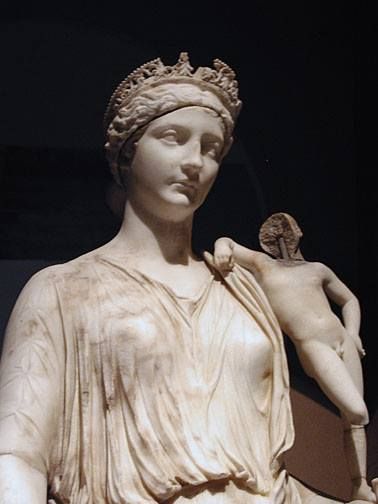

Statue of Antonia Minor with Eros from Claudius' Nymphaeum at his villa in Baiae. By the 8th century AD, this luxury resort of the Roman aristocracy was submerged under the sea.
The top is the original cleaned-up statue lifted from the bottom of the sea which is now located in the Archaeological Museum of the Phlegraean Fields.
The bottom is the copy placed at the original location which now features an underwater archaeological park accessible to divers.
#antonia minor#emperor claudius#ancient history#ancient rome#roman empire#ancient culture#ancient art#statue#not sure i would have wanted to have a dinner with a judgemental looking statue of my mum staring down at me
136 notes
·
View notes
Text



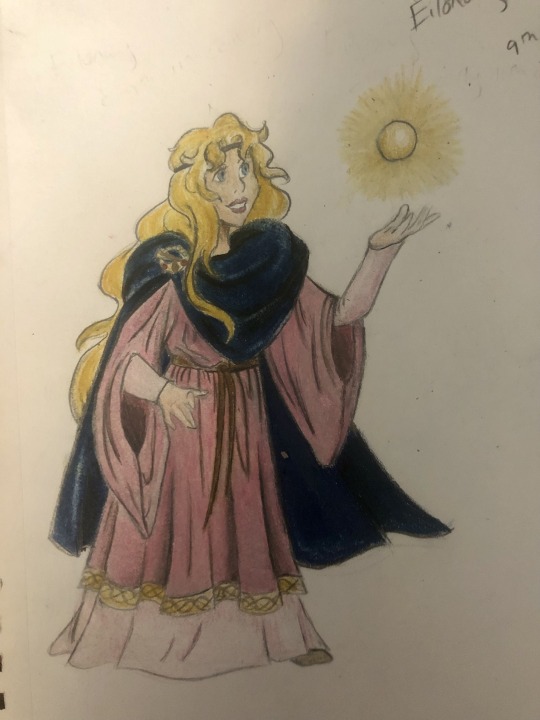

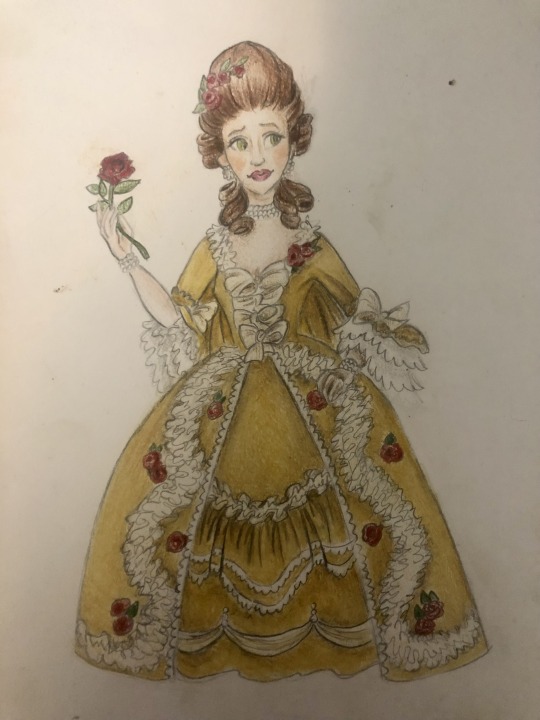
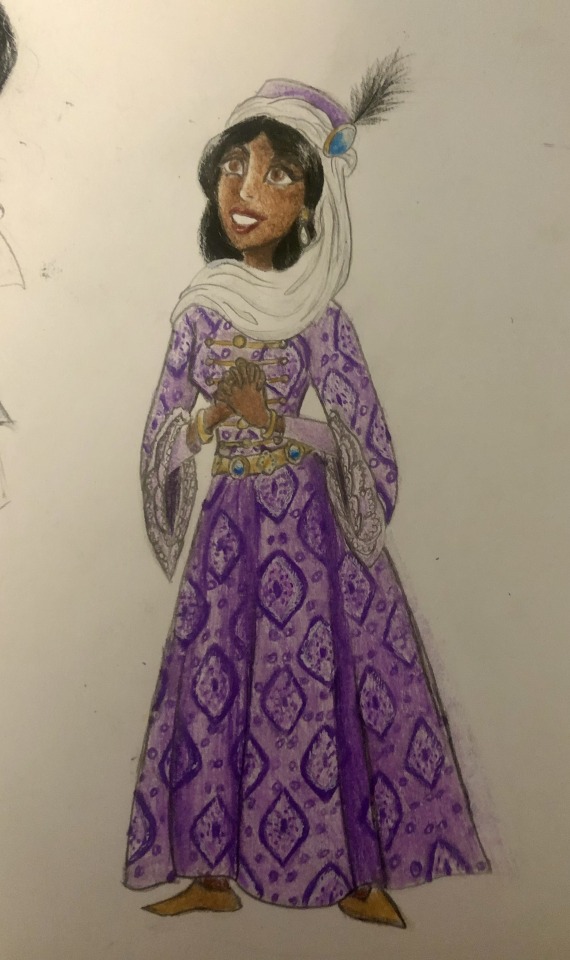


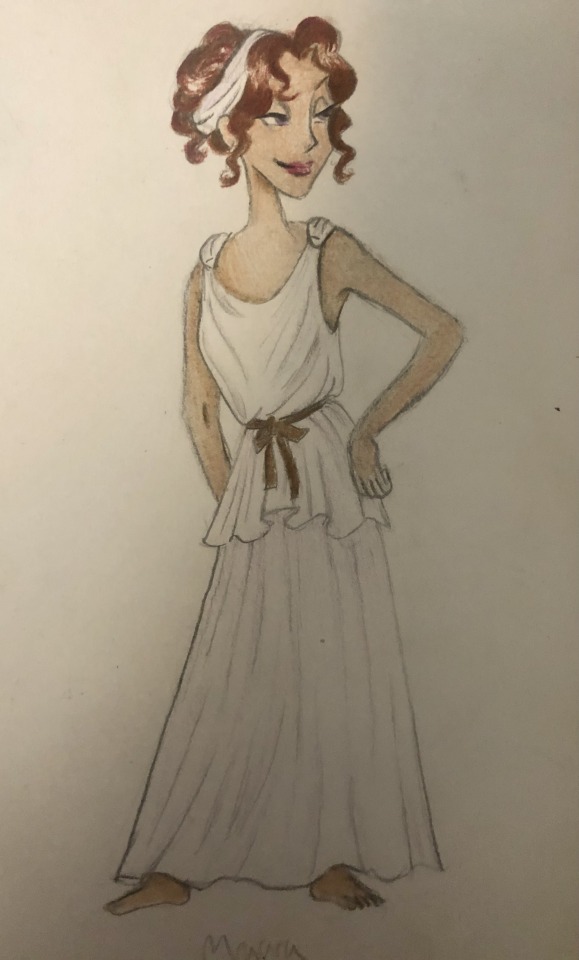


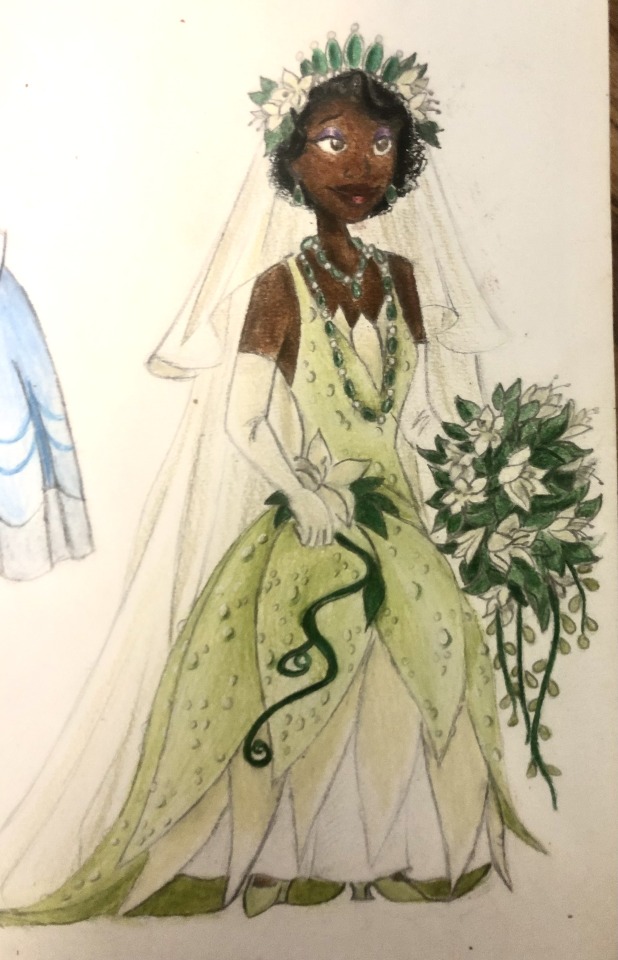


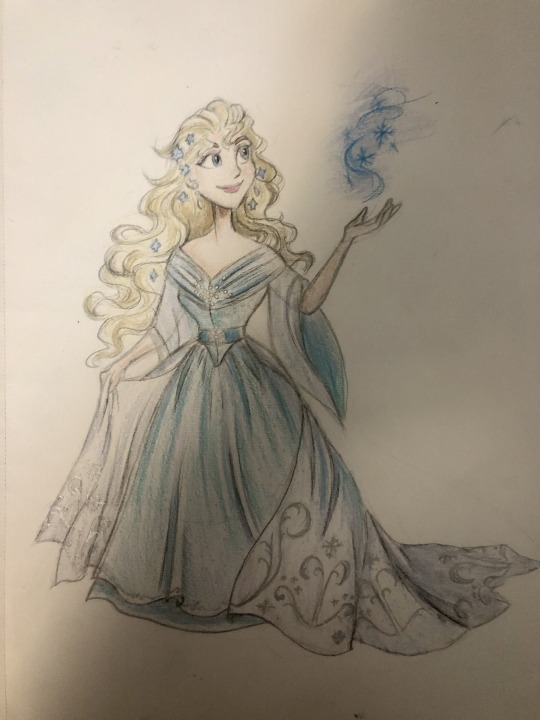
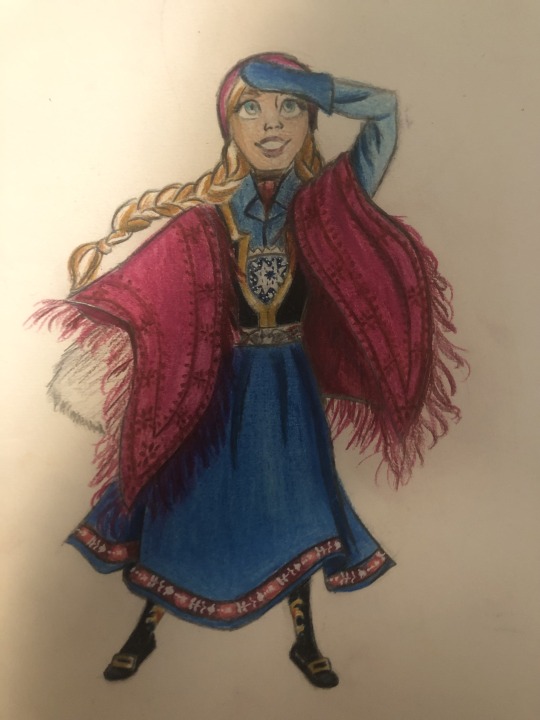

Thought I’d do a little art throwback with my own historically accurate (well mostly) takes on Disney princesses and heroines, which I did from 2021 to 2022! Included in this series are:
Snow White - early 16th century Germany (then part of the Holy Roman Empire)
Cinderella - late 1860s-early 1870s France
Aurora - mid 15th century France
Eilonwy - 8th-10th century (present day) Wales
Ariel - 1830s Mediterranean Europe (maybe Italy)
Belle - 1760s-1770s France
Jasmine - 16th century Arabian Peninsula during the Ottoman Empire
Pocahontas - 1607 Virginia, (present day) United States of America
Esmeralda - 1480s France (Romani garb)
Megara - Classical period of Ancient Greece (c. 5th-4th centuries BCE)
Mulan - Wei Dynasty China (386-535 AD)
Jane - 1900s England
Tiana - late 1920s New Orleans, Louisiana, USA
Rapunzel - 1790s-1800s Germany
Merida - 10th-11th century (present day) Scotland
Elsa - late 1830s-early 1840s Norway
Anna - same period as Elsa (duh)
Moana - ancient Polynesian Islands (c. 1st century BCE)
I had so much fun drawing these, as well as doing the research for each one! I actually drew most of the outfits each one wears (in their first movies) but they're waaaaay down further in my blog.
I'm planning to do a digital redo of these someday, as well as do my own historical spins on other characters I haven't done yet.
Which one is your favorite?
#my art#angie's scribbles#disney#disney princess#disney princesses#disney heroines#disney girls#disney ladies#historical disney#historically accurate disney#historical fashion#snow white#snow white and the seven dwarfs#snow white 1937#cinderella#cinderella 1950#princess aurora#aurora#sleeping beauty#sleeping beauty 1959#eilonwy#princess eilonwy#the black cauldron#ariel#the little mermaid#the little mermaid 1989#belle#beauty and the beast#beauty and the beast 1991#jasmine
36 notes
·
View notes
Text
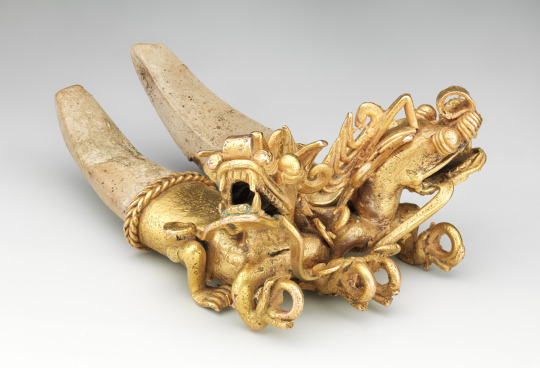
Gold and shell double crocodile pendant, Cocle culture (Panama), 8th-12th century AD
from The Metropolitan Museum of Art
523 notes
·
View notes